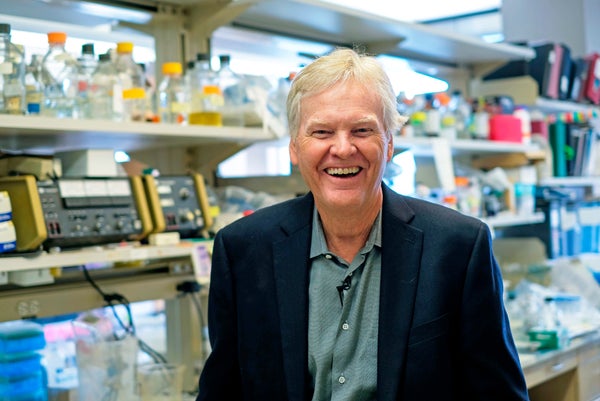This article was published in Scientific American’s former blog network and reflects the views of the author, not necessarily those of Scientific American
On October 2 researchers from the University of Geneva published a paper in Proceedings of the National Academy of Sciences on their discovery of a type of biological clock in muscle cells. The same day three researchers—Jeffrey Hall, Michael Rosbash and Michael Young—learned they had received the 2017 Nobel Prize in Physiology or Medicine for studies that identified key genes that control biological timepieces.
Young had written an article for Scientific American in 2000 describing the work that led to the Nobels. In it he included a sidebar entitled “Clocks Everywhere: They Are Not Just in the Brain” highlighting work by others in fruit flies that showed it was not just the brain that had such clocks. The Nobelists had focused on fruit fly brains but circadian mechanisms turned up in the kidneylike Malpighian tubules of fruit flies as well as in the wings, legs, oral regions and antennae of the insects.
Young ended his sidebar with this observation: “The diversity of the various cell types displaying circadian clock activity suggests that for many tissues correct timing is important enough to warrant keeping track of it locally. The findings might give new meaning to the term ‘body clock.’”
On supporting science journalism
If you're enjoying this article, consider supporting our award-winning journalism by subscribing. By purchasing a subscription you are helping to ensure the future of impactful stories about the discoveries and ideas shaping our world today.
In the last 15 years the sidebar has become a “mainbar” as molecular timekeeping apparatuses outside the brain have drawn increasing attention—the Geneva paper being one such example. In 2015 Keith Summa and Fred Turek of Northwestern University wrote an article for Scientific American—“The Clocks within Us”—that chronicled how the search for clock genes had extended into humans and reached beyond the suprachiasmatic nucleus, the master clock in the brain that tracks time based on cues from light and darkness.
The research in humans now provides evidence of the importance of these local clocks that the authors say “regulate the activity of 3 to 10 percent—and in some cases perhaps as much as 50 percent—of genes in various tissues,” Summa and Turek wrote. What’s more, when these local clocks go out of sync with the brain’s master clock, bad things often happen. Anomalies in circadian rhythms can lead to metabolic, cardiovascular, gastrointestinal—and even neurodegenerative problems.
The scrutiny brought to circadian biology by the Nobels should also highlight the limits of the prizes themselves in rewarding the best work in science. All of the winners of the Physiology or Medicine prize had unquestionably done “Nobel caliber” science. But research relies on casts of hundreds, if not thousands—the multitude now researching local clocks is just one example.
The chronobiology field, too, has a long history before and after the Nobel studies. In the 1970s Seymour Benzer and Ronald Konopka at the California Institute of Technology had localized one of the genes that was cited in awarding the Nobels—a gene called period. But it was the three prize winners who ultimately cloned and sequenced it. Later Joseph Takahashi at University of Texas Southwestern Medical Center discovered genes involved in activating expression of period and other clock genes—a vital component of the molecular timekeeping process.
All of these scientists also did Nobel-quality work. The decisions of the Nobel Committee might have been different if Benzer and Konopka were still alive or they were allowed to award a fourth prize. Maybe the Nobels need to get in sync with the times.
